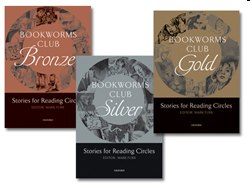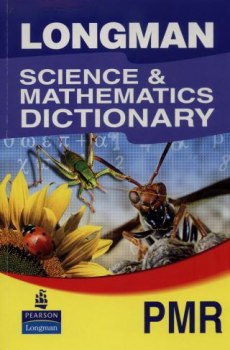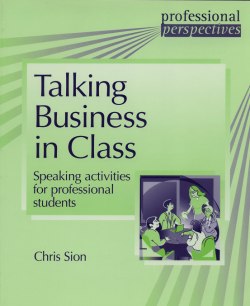Short Book Reviews
Hanna Kryszewska, Poland
Hanna Kryszewska is a teacher, teacher trainer, trainer of trainers. She is a senior lecturer at the University of Gdańsk, and EU Teacher Training College where she trains pre-service teachers. She is also Director of Studies at SWPS, Sopot, Poland. She is co-author of resource books: Learner Based Teaching, OUP, Towards Teaching, Heinemann, The Standby Book, CUP, Language Activities for Teenagers, CUP and a course book series for secondary schools: ForMat, Macmillan. She is also co-author of a video based teacher training course: Observing English Lessons. Hania is a Pilgrims trainer and editor of HLT Magazine.
E-mail: hania.kryszewska@pilgrims.co.uk

Bookworms Club: Reading Circles. Teacher’s handbook. Ed. Mark Furr. (2007) Oxford University Press. ISBN 978-0-19-472003-8 pp.32. This teacher’s handbook introduces three other titles: Bookworms Club Bronze, Bookworms Club Silver, Bookworms Club Gold. ISBN 978-0-19-472000-7, 978-0-19-472001-4, 978-0-19-47002-1, respectively. The three books are collections of seven adapted and/or simplified short stories around a theme: 1. people, mysteries and mistakes people make, 2. different kinds of people and their relationships, 3. life’s little problems. They are designed to be used with Reading Circles which are small groups of students who meet to talk about what they have read. This kind of project is suitable for developing learner autonomy and learner independence and at the same time introduce elements of CLIL - literature. The activities can also involve reading aloud, giving poster sessions, presentations etc. There are a lot of ideas for activities in the Teacher’s Handbook, which also contains some photocopiable materials. The stories are of varying length depending on level. The colours bronze, silver and gold mark the increase in difficulty as well as length. They are a good read and come from various parts of the English speaking world and were written in the 19th and 20th centuries. The books are beautifully published, on good quality paper and pleasant to hold. I am sure that many students will enjoy reading them, but they may be unsuitable for some age groups and learners in certain cultures and/or religions for whom some of the problems may be alien to or/and even unsuitable for some learners.

Science & Mathematics Dictionary. (2008) Longman Pearson Malaysia. ISBN 978-967-300-259-7, pp 244. This is a dictionary published by Longman Malaysia, which I picked up during a conference in Malacca. It is a bi-lingual dictionary for secondary students and as the title suggests is devoted to science and mathematics. It introduces the basic concepts, defines and illustrates them and explains the language learners need to talk about science such as: observing, classifying, measuring and using numbers etc. It is a great reference book and would be of great value for a CLIL teacher who wants to introduce the major concept in the given subject area. At the end of the book there is a bi-lingual glossary summing up the vocabulary introduced in the dictionary, which is help for vocabulary revision. I imagine this dictionary would be useful for students studying for the IAELTS, SAT and TOFEL exams, that is exams in which the knowledge of science terminology is very important. I hope this Malaysian publication is intended not only for the local market, which would be a great pity. I have a suspicion that it might be the case as I have been unable to find this resource material on the Longman website. Let’s see if we see other bi-lingual versions of the dictionary in other countries.

Talking Business in Class. C. Sion. (2004) Delta Publishing. ISBN 1-900783-64-9, pp 96. This resource book has been edited by Mike Burghall who over the years has shown good judgement and editorial skill. The book comes from the Professional Perspectives Series. The idea is that business professionals learning English want to talk about various aspects of their careers and the language class offers a stage and opportunity to communicate. The 50 activities in the book are intended as ideas for conversation classes in an ESP course, they offer a springboard for discussions on job related and general topics. The activities depend on the learner’s knowledge of professional jargon and their professional knowledge they bring into the class. This also means that the teacher needs to be familiar with the subject areas and must be much more proficient at business English than when teaching from a course where the language is much more predictable. In other words the ideas are suitable for a teacher who knows a lot about business English or who is OK about admitting that there may be business terminology they do not know, or is prepared to learn form the students. Pity Chris Sion is no longer with us so there will be no more books and great ideas from him to inspire us.



|